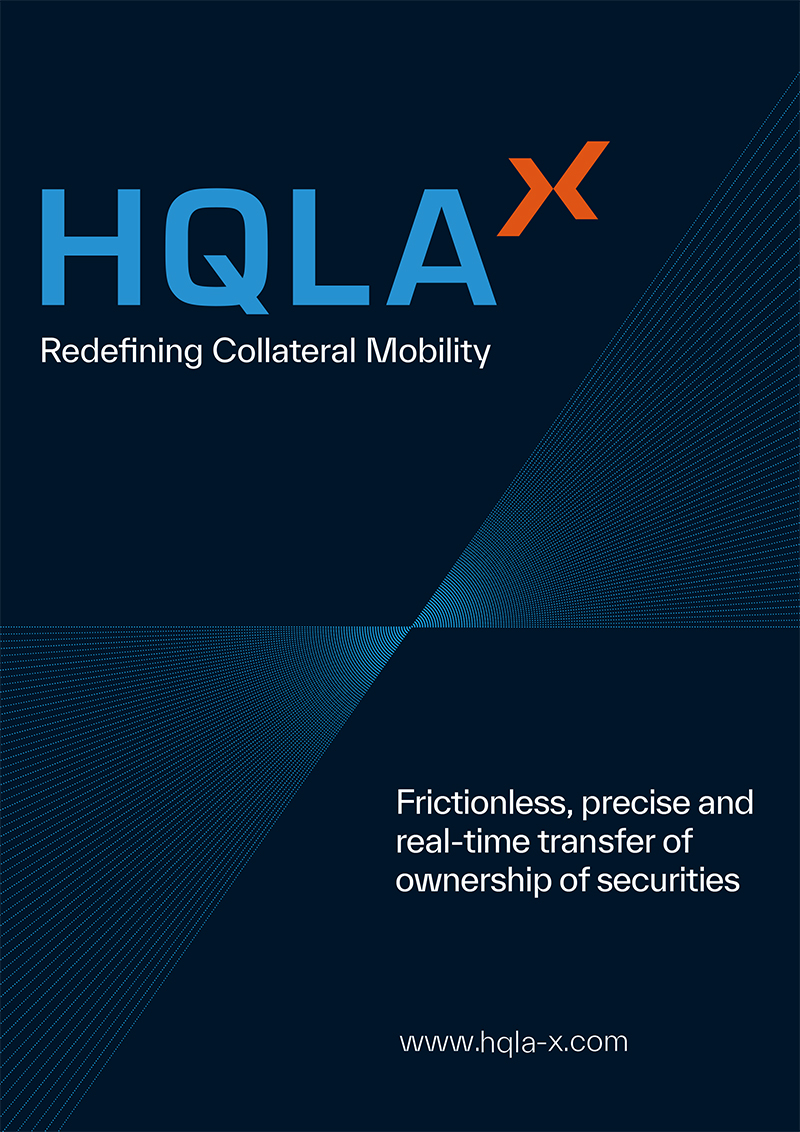EquiLend’s head of post-trade Iain Mackay speaks to Bob Currie about the release of Settlement Monitor and how the company is helping clients to adapt to the settlement discipline regime under CSDR
After a long period of consultation and detailed industry-level preparations, the Central Securities Depositories Regulation (CSDR) settlement discipline regime will come into effect on 1 February.
To deter settlement failures, CSDs in the European Economic Area (EEA) are required to impose cash penalties on CSD participants that cause a settlement failure. These cash penalties apply daily for each day that a transaction fails to settle after the intended settlement date.
The settlement discipline regime will have a wide impact on firms engaged in securities trading, including securities lending and financing transactions. All firms with transactions settling in EEA CSDs and ICSDs will be impacted by the regulation. This will include firms from the UK and other non-EU countries when a transaction settles in an EEA CSD or ICSD.
This will make it increasingly important for firms to track and resolve pending settlement failures and to take pre-emptive measures to prevent failed trades. This is in keeping with policymakers’ objectives, through the settlement discipline elements of CSDR, to raise the efficiency and safety of securities settlement systems and practices across the EEA.
To help firms to improve the efficiency of their settlement systems, and to prepare for the introduction of cash penalties — and mandatory buy-ins, if these are introduced at a later point — EquiLend has launched a new Settlement Monitor tool in readiness for the 1 February live date.
With the release of this settlement discipline regime, market participants will need to take in penalties reports from CSDs and to validate this information in line with their internal trading and settlement records. Monthly summaries of failed trades and corresponding cash penalties from the CSD must be reconciled against trade level daily records and reporting. For firms settling trades at multiple locations, this will require that they analyse and reconcile settlement activity reports from each CSD in the EEA to which they route trades for settlement.
In preparation for the product release, EquiLend has been onboarding clients into its test environment over the past three months, operating a test framework which mirrors the user’s production environment.
“We recognise from our experience in building our Securities Financing Transactions Regulation (SFTR) service how important the client onboarding and testing process is to the success of the end solution”, says Mackay. “We must ensure that data submitted by clients is accurate and standardised, verifying that insights provided via the Settlement Monitor dashboard are consistent with clients’ live trading and settlement activity.”
Beyond reconciliation
Settlement Monitor is a settlement failure management platform which enables users to monitor, reconcile and resolve failed (and pending fails) securities finance transactions. It provides a consolidated view of a user’s settlement activity across its global trading environment, enabling users to monitor a trade’s status across the settlement lifecycle, focusing on the key elements that may cause a trade to fail.
In doing so, Settlement Monitor reconciles SSI information from EquiLend’s SSI repository to identify errors and to suggest corrections. Additionally, it draws real-time collateral status updates from EquiLend’s Exposure platform, confirming that required collateral is in position to enable loans to be released into the market.
This also allows clients to monitor and manage the lifecycle events associated with a SBL transaction — including recalls and returns, rate changes, mark-to-market and corporate actions — in one centralised dashboard and to track this activity on a near real-time basis.
A strength of EquiLend’s service portfolio, Mackay notes, is that it offers an end-to-end securities finance solution that fulfils clients’ needs across the securities finance value chain — embracing trading, post-trade and data services. With the acquisition of a majority stake in Stonewain in August 2021 (preceded by a 2.5 year partnership arrangement with the New Jersey-based company which resulted in the launch of the EquiLend Spire product), EquiLend brings new levels of efficiency to record keeping and audit functions for securities finance transactions while providing the user with a consolidated, enterprise-wide view of their positions and holdings.
For users wishing to centrally clear their securities lending transactions, EquiLend Clearing also provides direct connectivity to a range of central counterparties.
Designed to reduce fail rates and to minimise penalties in the Central Securities Depository Regulation (CSDR) regime, Settlement Monitor’s pre-matching and fails management engine compares mandatory fields required for settlement to identify and address issues which may lead to trade failure.
“For transactions traded electronically — for trades booked on EquiLend’s NGT platform for example — our post-trade analytics reveal that typically around 0.3 per cent of settlement instructions have broken fields,” says Mackay. “In contrast, for trades booked off platform, up to 25 per cent of settlement instructions may have incorrect field entries and will fail to settle on settlement date.”
“This is an unacceptable statistic for a securities finance industry working to improve STP rates and to reduce operational risk,” observes Mackay. “Our priority, and a primary reason for the launch of Settlement Monitor, is to eliminate these operational errors and to reduce fail rates across the sector.”
A common source of settlement failure, Mackay notes, arises from firms attaching incorrect standing settlement instructions (SSIs) when they book the trade. EquiLend’s solution helps users to apply the correct SSIs and to confirm that settlement reference data held in the SSI repository is current and accurate. Among other benefits, this is essential to ensure that settlement instructions are populated accurately and that subsequent reallocations are correctly processed, ensuring that loan securities are allocated to the correct recipient.
With this in mind, Settlement Monitor has focused on moving beyond traditional reconciliation, bridging wider elements of the value chain and monitoring for errors from point of trade across the full settlement cycle. As noted, Settlement Monitor also includes a predictive capability, providing recommendations to users regarding which SSIs should be applied and advising on remedial action when it identifies potential trade failure or STP breaks.
With the spotlight focused on settlement risk, this is driving a stronger commitment at enterprise-level to improving settlement discipline. Recognising the negative impact that failed trades can have on the aggregate cost of securities lending, trading teams are taking greater interest alongside their post-trade colleagues in eliminating fails and improving STP rates. These cost implications will become even more relevant with the introduction of CSDR cash penalties.
For securities lending transactions, which typically settle free-of-payment (FoP), this demands integrated end-to-end technology, but also joined-up thinking across the organisation. When borrowing securities, for example, the FoP trade must align with deadlines for onward use of the borrowed securities. If securities are borrowed as fails coverage for a DvP cash equities trade, for instance, the FoP trade must release the securities before the DvP settlement deadline. If not, the DvP transaction will fail — resulting in a cash penalty being applied by the CSD, while the firm will also carry the cost of borrowing the securities.
Given the cost implications of settlement failure — alongside potential reputational damage and disruption to trading strategy — Mackay predicts that Settlement Monitor will be an important tool in helping users to manage their settlement workflow in a CSDR environment.
These factors may also prompt a change in behaviour from trading parties, with firms increasingly moving to same-day settlement for securities lending transactions. “The goal is to help the business to adapt to a same-day process and to ensure this is as streamlined and STP as possible,” he says. “NGT and its link into our post-trade solutions can reduce the latency between trade execution and settlement — streamlining the timeframe for execution, pre-matching, passing settlement instructions to the CSD, as well as ensuring that inventory is in place by the required cut offs.”
With the cash penalty regime going live from the start of February, Settlement Monitor will also play an important role in enabling firms to process, reconcile and allocate settlement fines. When monthly details of settlement fines are issued by the CSD, Mackay believes that some firms will experience difficulties in validating and allocating these charges using their current systems — and it is important that they can integrate this requirement with their existing procedures for settlement reconciliation. With Settlement Monitor, this activity will be centralised, reconciled and it will provide guidance regarding how settlement penalties should be allocated within the organisation.
In summarising, Mackay explains that the goal is to help firms to control their securities lending transactions at pre-trade level and to remove inefficiencies within securities lending, thereby ensuring that this activity contributes to an efficient capital market. “EquiLend’s Settlement Monitor will help firms to achieve this,” he concludes. “Being able to apportion settlement fines issued by the CSD and effectively allocate real charges to inefficient counterparties will help to drive real change and allocation of liquidity.”


